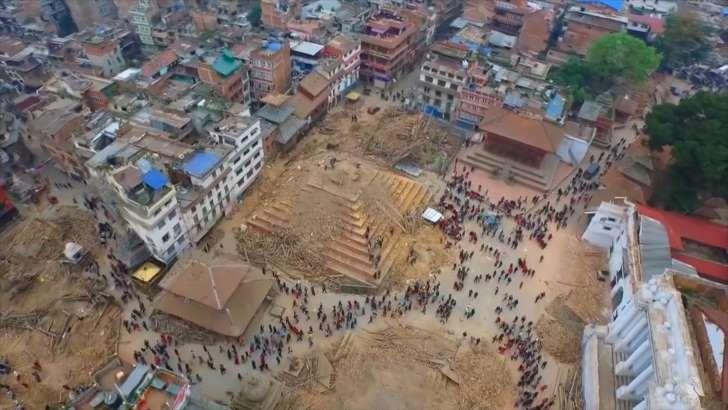April 30, 2015
Roorkee: In the wake of the disastrous Nepal earthquake, reports have said that India's preparedness for a quake as big as Nepal is dismal. But any hopes of learning from the Nepal earthquake may not happen thanks to Indian red tapism that has resulted in sensors placed to study such natural calamities lying defunct.

April 30, 2015
Roorkee: In the wake of the disastrous Nepal earthquake, reports have said that India's preparedness for a quake as big as Nepal is dismal. But any hopes of learning from the Nepal earthquake may not happen thanks to Indian red tapism that has resulted in sensors placed to study such natural calamities lying defunct.

Nepal's earthquake from above
According to a report in The Hindustan Times, seismologists and experts have said that assessing the scale of an earthquake or predicting aftershocks will not be possible because ground-motion detectors, the mainstay of earthquake monitoring in India, have been lying defunct for the last 8 months due to "bureaucratic bottlenecks."
The detectors help scientists understand how an earthquake affects a building and it also assists in reducing the risk of damage from ground motion.
The Indian Institute of Technology, Roorkee (IIT-R) installed the system of sensors between 2005 to 2008. The system cost the government Rs 10 crore to install and Rs one crore per year to maintain.
Funded by the Union Science and Technology ministry, the sensors were installed in district headquarters across northern and eastern states, including Bengal and Bihar. Called accelerographs, these ground-motion detectors are vital as they serve as early warning system before an earthquake.
The Earth Sciences Ministry stopped funding the project in September 2014, and told IIT Roorkee in February this year to prepare to hand over the sensors to the National Centre for Seismology (NCS), an institution under the ministry. But it turns out the operation network of sensors may not have been taken up by either institution and were idling when the Nepal earthquake struck.
"During this government takeover, someone perhaps forgot that the sensors need maintenance," Ram Iyengar, an earthquake engineering specialist formerly with the Indian Institute of Science, Bangalore, was quoted as saying by The Telegraph.
This took place despite a professor of earthquake engineering at IIT Roorkee reportedly writing to the government in March 2015 warning that India would 'cut a very sorry face' if there was a major earthquake, since no data would be available.
The NCS, reportedly didn't even actually seek access the sensors until the earthquake in Nepal, despite the fact that the instruments require regular maintenance like having their batteries changed.
However, the government's putting up a brave face for now, and has said that the data will be available.
"After successful experiments, these instruments have to be permanently made operational. Data is still available. If at all, this is a temporary gap," Shailesh Naik, the earth sciences secretary, told HT.
As Firstpost noted earlier in this article, the "big" earthquake is yet to hit the Himalayan line and when it does it will be closer to India. Hopefully the government's assurances aren't invalid and it has recorded the data from the seismic event in Nepal. A failure to have done so could prove fatal for many in the future.
Courtesy: Firstpost















































































































